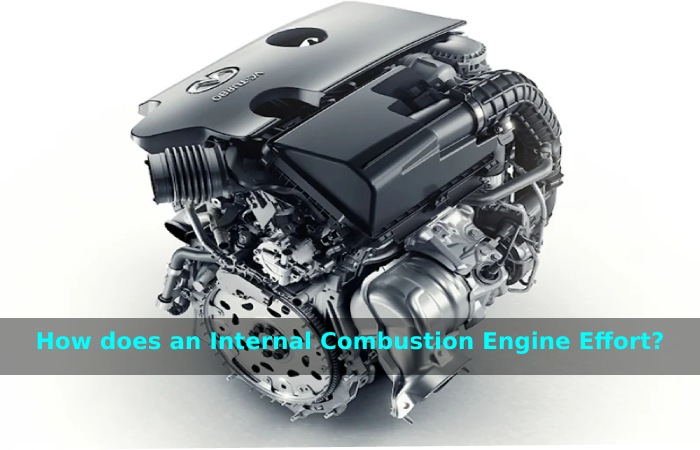
01 Apr What are Internal Combustion Engines
Table of Contents
Introduction
Internal combustion engines provide excellent driving and durability, with more than 250 million road vehicles in the United States trusting them. Along with petrol or diesel, they can also use renewable or other fuels (e.g. natural gas, propane, biodiesel or ethanol). They can also combine with hybrid electric powertrains to increase fuel economy or plug-in hybrid electric systems to expand the range of hybrid electric vehicles.
How does an Internal Combustion Engine Effort?

Combustion, also known as combustion, is the primary chemical process of releasing energy from a mixture of fuel and air. In an ICE, the explosion and combustion of the power occur within the engine itself. The machine then partially converts the combustion energy to work.
The motor consists of a fixed cylinder and a movable piston. Expanding flue gas pushes the piston, which rotates the crankshaft. Ultimately, this movement drives the vehicle’s wheels through a gear system in the powertrain.
Two types of internal combustion engines are currently in production: the spark-ignition gasoline engine and the compression-ignition diesel engine. Most of them are four-stroke cycle motors, which means four-piston times are needed to complete a cycle. The cycle includes four processes: intake, compression, combustion and power stroke, and exhaust.
Spark-ignition and compression-ignition diesel engines differ in how they supply and ignite fuel. In a positive-ignition machine, the energy is mixed with air and then introduced into the cylinder during the intake process. Once the piston compresses the fuel/air mixture, the spark ignites and causes combustion.
Flue gas expansion pushes the piston during the power stroke. In a diesel engine, only air is introduced into the machine and then compressed. The diesel engines then spray the fuel into the compressed hot air at a suitable, measured speed, causing it to ignite.
Also Read: Sim Card For Ipad Is Necessary?
Internal Combustion Engine Improvements
Last, Over the past 30 years, research and development have helped manufacturers reduce ICE emissions of criteria pollutants. Such as nitrogen oxides (NOx) and particulate matter (PM) by more than 99% to meet EPA emissions standards. The research has also improved ICE performance (power and acceleration time of 0-60 mph) and efficiency, helping manufacturers maintain or increase fuel economy.
History of Internal Combustion Engine
The initial internal combustion engines did not have solidity but ran on a mixture of air and fuel that could be sucked in or blown out during the early part of the intake runners. The most crucial distinction between modern internal combustion engines and early designs is the use of compression and, in particular, cylinder compression.
1509 – Leonardo da Vinci described an uncompressed engine. (His report may not imply that the idea was original to him or remained built.)
1673: Christiaan Huygens described an uncompressed engine.[1]
In the 1780s: Alessandro Volta built an electric toy gun in which an electric spark exploded a mixture of air and hydrogen, firing a cork from the end of the gun.
17th century: The English inventor Sir Samuel Morland used gunpowder to power water pumps.
1794: Robert Street built an uncompressed engine whose operating principle would control for a century.
1806: Swiss engineer François Isaac de Rivaz made an internal combustion engine mechanical with hydrogen and oxygen.
1823: Samuel Brown original the first internal combustion engine for industrial application. It had no understanding and remained based on what Hardenberg calls the “Leonardo cycle,” which, as its name suggests, was out of date at the time. Today, the first significant funds in an area where standards had not yet establish went to the best show people rather than the best workers.
Operation internal combustion engines
All internal combustion engines are subject to the exothermic chemical combustion process: the reaction of a fuel, typically with air, although other oxidizers such as nitrous oxide may use.
The most mutual fuels in use today are composed of hydrocarbons and are derived mainly from petroleum. These include diesel fuel, gasoline and petroleum gas, and the occasional use of propane gas.
Most inside combustion engines designed for gasoline can run on regular gas or liquefied petroleum gases without significant modifications, except for fuel delivery components. Fluid and gaseous biofuels, such as ethanol and biodiesel
A method of diesel fuel from crops that produce triglycerides, such as soybean oil, can also use. Some can also run on hydrogen gas.
All internal combustion engines must have a method to achieve ignition in their cylinders to create combustion. Engines use either an electrical method or a compression ignition system.
Conclusion
Internal combustion engines remain used in requests ranging from marine propulsion. And power generators with a capacity greater than 100 MW to hand tools where the power supply is less than 100 W. It implies that the size and features of current engines vary widely between large diesel cylinders of a diameter greater than 1,000 mm. And they are also alternating at speeds as low as 100 rpm and small two-stroke gasoline engines with cylinders of diameter around 20 mm. Within these two ends remain medium-speed diesel engines, diesel engines for heavy cars, trucks and passenger cars, aircraft engines, motorcycle engines and small industrial engines. Of all these types, the petrol and diesel engines of passenger cars have a prominent position. They remain the most significant engines produced in the world; as such, their influence on social and economic life is paramount.
Also Read: Definition of VOIP and How Does VOIP Work


No Comments